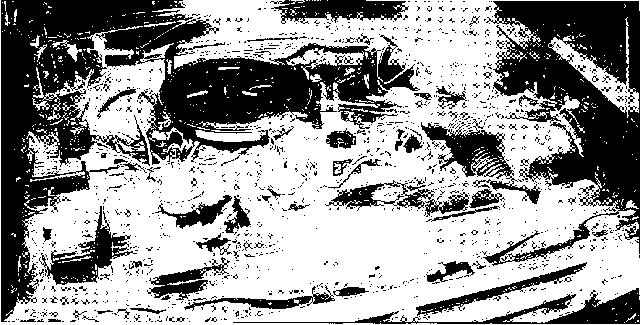
Page 2

| system. The condenser removes heat from the
refrigerant and condenses the gas to a liquid. The orifice expansion valve (or tube)
regulates the flow of high-pressure liquid refrigerant to the evaporator, thereby lowering
the pressure. The evaporator is used to cool. Dry and clean the air that enters the
passenger compartment. The accumulator-dehydrator separates liquid refrigerant from the
gas state before it enters the compressor and removes moisture from the system. The upgrade process is a complex procedure that requires specific execution In order to ensure a proper retrofit. The system must be thoroughly evacuated before replacing the refrigerant by performing the following steps.
The introduction of HFC R-134a refrigerant has solved the environmental problems of CFC R-12, yet there are new issues that have to be considered. Initial testing of HFC R-134a has shown higher operating pressures than that of CFC R-12. The new gas, R-134a is less active than Freon R-12. This results in the gas changing to a liquid at a slower rate than R-12. Retrofitting an existing R-12 system creates several differences in the automotive industry that need to be addressed. |
The condensers of certain year Toyota may have
inadequate capacity width and space limitations. This may restrict the use of a larger
condenser. The automotive a/c industry has come up with a new condenser design called
"Parallel Flow." This condenser works on the same principle as a car radiator
rather than an a/c condenser. Another difference is in the a/c hoses. They may need to be
replaced with a new "barrier" type because the R-134a gas will permeate through
older hoses. Only barrier-type hoses will work with R-134a systems. One other
consideration is some a/c systems after upgrading may have a vent-outlet-temperature
variance ranging from 4 to 6 degrees higher. As a result, it may be necessary to dial in
heat settings and expansion-valve orifice sizes. If you plan on keeping your vehicle for a few years it may be necessary to upgrade your air conditioning system. If your system is currently not operating properly, you are the prime candidate for an upgrade. The cost of R-12 is now higher than R-134a and will soon be unavailable to recharge your system after it has been repaired. When the existing supply of R-12 is exhausted. The demand for upgrading will increase, as will the price. In these changing times of heightened environmental consciousness, automobile a/c systems must become environ-mentally friendly to improve our global ecology. For more information, feel free to contact I.C.E. at the location listed in the Source box. |
ICE Inc., a company that has been manufacturing and servicing automotive air-conditioning systems for 36 years. Located in San Diego. ICE Inc., provides both informative data pertinent to the environmentally safe retrofitting of A/Cs as well as upgrade kits to all makes and models of automobiles.
I.C.E. SALES
Goto Page 1, 2
Articles Page